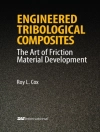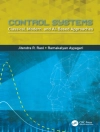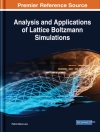This book provides a comprehensive overview of the synthesis, properties, and emerging applications of 3D graphene. It begins with an introduction to 3D graphene and covers the methods for synthesizing and printing 3D graphene. The book explores the characteristics of 3D graphene, including its morphology, surface area, and porosity, and the techniques used for characterizing it. Architectural and chemical aspects of 3D graphene for emerging applications are discussed, including energy storage, environmental remediation, and biosensing. The book reviews recent advancements in 3D graphene for electrochemical sensors, biosensors, and optical sensors, as well as its use in flexible sensors. It also covers the use of graphene-based materials for the remediation of hydrogen sulfide gas and the removal of inorganic pollutants and pharmaceutical residues. The book further explores the use of 3D graphene in metal-ion and metal-air batteries, flexible and wearable batteries, and high-performance supercapacitors. It also covers its use in photovoltaics, fuel cells, and as electrocatalysts and photocatalysts for water splitting. Additionally, the book discusses the use of 3D graphene in flexible electronics, capacitive de-ionization of water, and theranostic applications. Finally, the book addresses the toxicity, stability, recycling, and risk assessments of 3D graphene, providing a comprehensive understanding of the material’s safety and sustainability considerations. Overall, this book is a valuable resource for researchers, engineers, and students interested in the synthesis, properties, and applications of 3D graphene.
Innehållsförteckning
Section 1: Fundamentals.- Chapter 1. Introduction 3D graphene.- Chapter 2. Synthesis of 3D graphene.- Chapter 3. Architectural and chemical aspects of 3D graphene for emerging applications.- Chapter 4. Theoretical consideration in designing advanced 3D graphene.- Section 2: 3D Graphene for advanced sensors.- Chapter 5. 3D Graphene-based electrochemical sensors.- Chapter 6. 3D Graphene-based biosensors.- Chapter 7. 3D Graphene-based optical sensors.- Chapter 8. 3D Graphene for self-powered sensors.- Chapter 9. 3D Graphene for flexible sensors.- Section 3: 3D Graphene in environmental applications. Chapter 10. 3D Graphene for toxic gas removal.- Chapter 11. 3D Graphene for removal of heavy metals.- Chapter 12. 3D Graphene for removal of organic pollutants.- Chapter 13. 3D Graphene for removal of inorganic pollutants.- Chapter 14. 3D Graphene for removal of pharmaceutical residues.- Section 4: 3D Graphene for energy applications. Chapter 15. 3D Graphene for metal-ion batteries.- Chapter 16. 3D Graphene for metal-air batteries.- Chapter 17. 3D Graphene for supercapacitors.- Chapter 18. 3D Graphene for photovoltaics.- Chapter 19. 3D Graphene for fuel cells.- Chapter 20. 3D Graphene as electrocatalysts for water-splitting.- Chapter 21. 3D Graphene as photocatalysts for water-splitting.- Section 5: 3D Graphene for flexible devices.-Chapter 22. 3D Graphene for flexible batteries.- Chapter 23. 3D Graphene for flexible supercapacitors.- Chapter 24. 3D Graphene for flexible solar cells.- Chapter 25. 3D Graphene for flexible electronics.- Section 6: Current challenges and future perspectives.- Chapter 26. Toxicity, stability, recycling, and risk assessments.- Chapter 27. Challenges in 3D graphene of advanced applications.
Om författaren
Dr. Ram Gupta is an Associate Professor at Pittsburg State University. Dr. Gupta’s research focuses on green energy production, storage using 2D materials, optoelectronics & photovoltaics devices, bio-based polymers, flame-retardant polyurethanes, conducting polymers & composites, organic-inorganic hetero-junctions for sensors, bio-compatible nanofibers for tissue regeneration, scaffold & antibacterial applications, and bio-degradable metallic implants.












